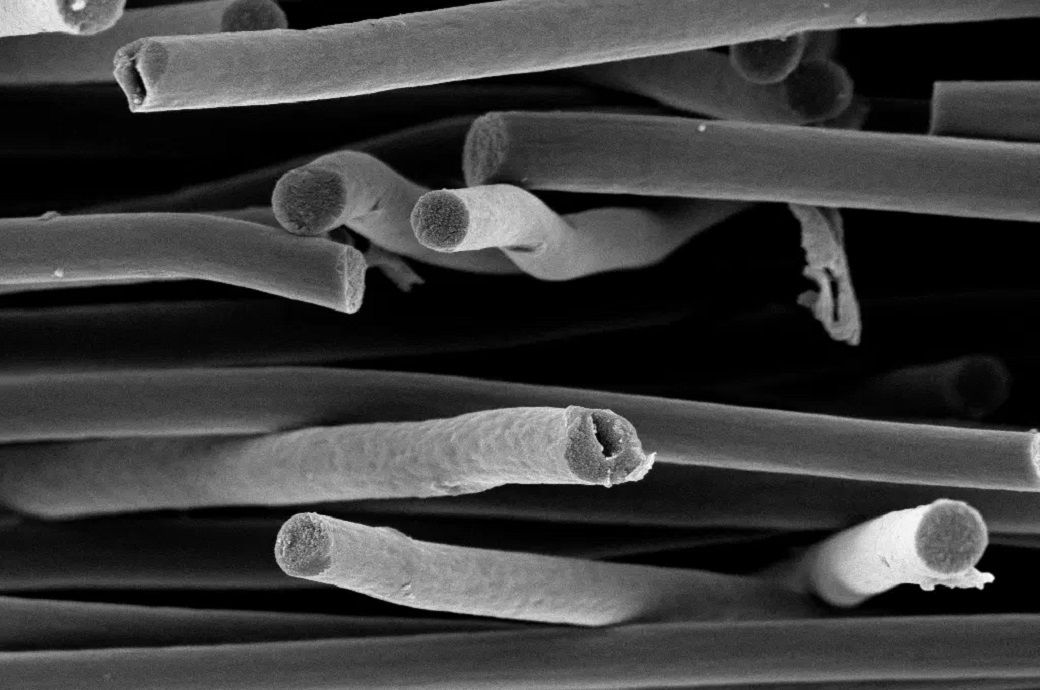
The new nonwovens consist of fibres with a sea-island type nanostructure and with a diameter between 500 and 600 nanometres. Every fibre contains a matrix of carbon in which nano-sized ceramic phases are homogeneously distributed. The particles form tiny ‘islands’ in the ‘sea’ of carbon matrix and have opposite, complementary effects, the University of Bayreuth said in a press release.
The carbon matrix enables the electron transport in the fibres and thus high electrical conductivity, meanwhile the nano-sized silicon-based ceramic, prevents thermal energy from spreading just as easily. This is because the interface between the nano-sized ceramic and the carbon matrix is very high, while the pores of the nonwoven are very small. As a result, there is a strong scattering of phonons, which is the smallest physical units of vibrations triggered by thermal energy. A continuous directed heat flow does not occur.
The unusual combination of high electrical and extremely low thermal conductivity now is highlighted by a comparison with more than 3,900 materials of all types, including ceramics, carbons, natural materials, synthetic polymers, metals, glasses, and various composites. Electron transport and thermal energy insulation were more coupled in the new electrospun composite fibre material than in those other materials.
“Our electrospun nonwovens combine highly attractive multifunctional properties that are usually distributed among different classes of materials—high electrical conductivity, thermal insulation familiar from polymer foams, and non-flammability and heat resistance characteristic of ceramics. The fibres are based on a simple material concept, and they were made from commercial polymers,” said first author Dr Xiaojian Liao, a postdoctoral researcher in macromolecular chemistry, University of Bayreuth.
“We are convinced that our new fibres are suited for several application areas. For example, in the fields of energy management, battery-powered electromobility, smart textiles, or aerospace,” said Dr Seema Agarwal, professor of macromolecular chemistry, University of Bayreuth and one of the corresponding authors of the new study.
Fibre2Fashion News Desk (NB)

